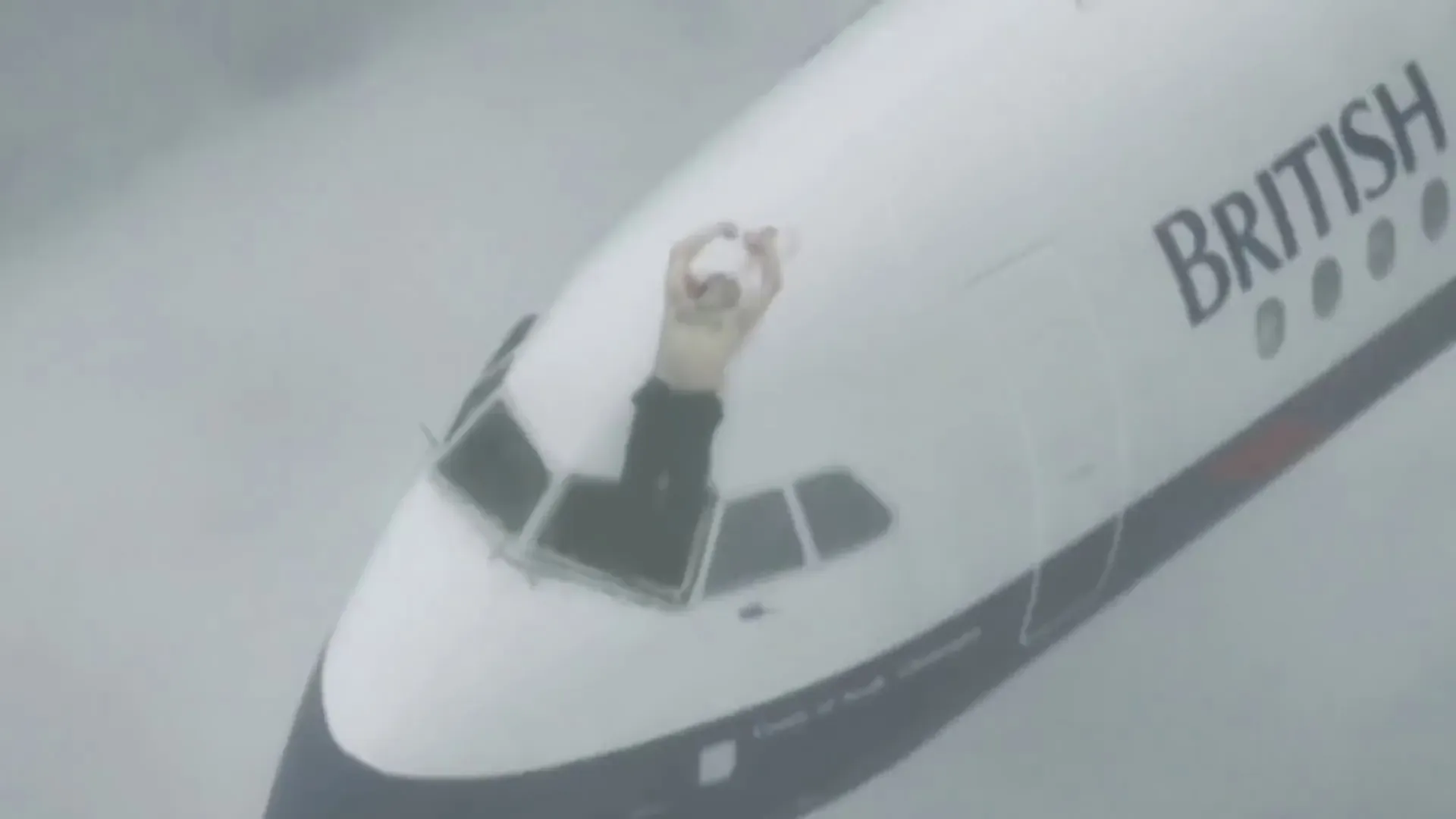On June 10, 1990, British Airways Flight 5390 was flying from Birmingham, England, to Malaga, Spain, with 81 passengers and six crew members on board. The plane was a BAC One-Eleven 528FL, a twin-engine jet airliner that had been in service since 1971.
The captain was Timothy Lancaster, a 42-year-old veteran pilot with more than 11,000 flight hours, and the co-pilot was Alastair Atchison, a 39-year-old with more than 7,500 flight hours. Both pilots had flown the BAC One-Eleven for over 1,000 hours.
The flight took off at 8:20 a.m. local time and climbed to a cruising altitude of about 17,300 feet. The weather was clear and calm, and the flight was expected to be routine. The pilots released their shoulder harnesses and Lancaster loosened his lap belt.
At 8:33 a.m., the cabin crew were preparing for meal service and one of them, Nigel Ogden, was entering the cockpit when a loud bang occurred. The left windscreen panel, on Lancaster’s side of the flight deck, had separated from the forward fuselage, creating an explosive decompression that sucked Lancaster out of his seat and through the window.
 |
| Discovery produced a dramatic reconstruction of the incident. Credit: Reconstruction/Discovery |
Ogden reacted quickly and grabbed Lancaster’s legs before he could be pulled out completely. He held on with all his strength as Lancaster’s upper body was exposed to the extreme wind and cold outside the plane.
The cockpit door was blown inward onto the control console, blocking the throttle control and causing the plane to descend rapidly. The autopilot had disengaged and the flight documents and checklists were sucked out of the cockpit. Debris flew in from the passenger cabin and condensation filled the air.
Ogden told the Sydney Morning Herald: “I whipped round and saw the front windscreen had disappeared and Tim, the pilot, was going out through it – he had been sucked out of his seatbelt and all I could see were his legs.
“I jumped over the control column and grabbed him round his waist to avoid him going out completely.
“His shirt had been pulled off his back and his body was bent upwards, doubled over round the top of the aircraft.
“His legs were jammed forward, disconnecting the autopilot, and the flight door was resting on the controls, sending the plane hurtling down at nearly 650kmh through some of the most congested skies in the world.”
He continued: “I thought I was going to lose him, but he ended up bent in a U-shape around the windows.
“His face was banging against the window with blood coming out of his nose and the side of his head, his arms were flailing and seemed about 6 feet long. Most terrifyingly, his eyes were wide open. I’ll never forget that sight as long as I live.”
 |
| Discovery produced a dramatic reconstruction of the incident. Credit: Reconstruction/Discovery |
Atchison took over the controls and declared an emergency to air traffic control. He asked for an immediate landing at the nearest airport, which was Southampton. He also instructed the cabin crew to restrain Lancaster and keep him inside the plane as much as possible.
Ogden was joined by another flight attendant, Simon Rogers, who wrapped a belt around Lancaster’s waist and secured it to his seat. A third flight attendant, John Howard, took over Ogden’s position when his arms became numb from holding Lancaster’s legs. The crew also tried to cover Lancaster with blankets and coats to protect him from the cold.
Meanwhile, Atchison struggled to fly the plane with limited visibility and control. He had to avoid other planes in the busy airspace and deal with alarms and warnings from the instruments. He also had to cope with the noise and pressure from the open window.
He managed to descend to 11,000 feet, where he could breathe without oxygen masks. He then contacted Southampton Airport and requested an emergency landing. He was cleared for runway 02 and guided by radar.
Atchison made a smooth landing at 8:55 a.m., 22 minutes after the windscreen blew out. He stopped the plane on the runway and asked for immediate assistance. The emergency services arrived and helped extricate Lancaster from his precarious position.
He was still alive but unconscious. He had suffered several fractures, frostbite, shock, and bruises. He was taken to a hospital along with Ogden, who had injured his arm and eye during the ordeal.
The passengers and the rest of the crew were unharmed but shaken by the incident. They were transferred to another plane and continued their journey to Malaga later that day.
The investigation into the incident revealed that the windscreen panel had been replaced the previous day by a maintenance worker who had used incorrect bolts that were too small for the holes. The bolts had failed under stress during the flight, causing the panel to detach. The maintenance worker was charged with negligence but acquitted after a trial.
Lancaster made a remarkable recovery and returned to work after less than five months. He flew with British Airways until 2003 and then with EasyJet until he retired in 2008. He is considered one of the luckiest pilots in history for surviving such a harrowing experience.
Atchison was praised for his calmness and skill in landing the plane safely. He also continued to fly with British Airways until his retirement.

